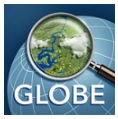One Month and Counting: Solar Eclipse Visible From Everywhere in North America
Become a citizen scientist during the eclipse, using the GLOBE Phone App and help scientists study what happens when Earth goes dark during the Solar Eclipse
One of the most anticipated solar eclipses in history is just a month away. The August 21 solar eclipse provides a unique opportunity to study our planet and what happens when Earth goes dark during an eclipse. It’s also an opportunity for what may be the largest citizen science project of all time.
On that Monday, the moon’s shadow will darken the sky, causing temperatures to drop and stars to become visible in the typical daylit sky. This brief hiccup in the natural day-night cycle changes the amount of energy an area gets from the sun.
NASA scientists hope to learn just how much Earth’s environment changes during this historic eclipse and they need help from your viewers! Using the GLOBE Observer phone application, curious eclipse onlookers can become citizen scientists. This resulting data will help us better understand the significant relationship between the sun and Earth.
Join NASA scientists on Friday, July 21 from 6:00 a.m. – 11:30 a.m. ET to find out where your listeners can see the eclipse and how they can participate, whether they’re viewing from the path of totality or not!
Everyone in North America (weather dependent) will experience an eclipse, one of the nature’s rarest shows – even those outside the path of totality. For the first time since 1918, the dark shadow of the moon will sweep coast-to-coast across the United States, putting 14 states in the path of totality and providing a spectacular view of a partial eclipse across all 50 states.
*** To book a window contact ***
Clare Skelly / clare.a.skelly@nasa.gov / (301) 286-4994
Suggested Questions:
1. What’s going to happen one month from today? [answer includes safety information]
2. Why is this eclipse special to NASA?
3. How can our viewers participate?
4. We live on a solar-powered planet. How does energy from the sun impact Earth?
5. Where can we learn more?
Extra Questions for Longer Interviews:
6. Tell us about the new mission NASA is preparing to launch that will continue to collect information on the sun-Earth relationship.
7. It’s the middle of summer, and it’s hot out! How do space weather and the solar cycle make people more vulnerable to sunburn?
8. What parts of Earth is primarily sensitive to changes in solar energy output?
9. How often do other planets experience these kinds of eclipses?
Live Shot Details:
Location: NASA’s Goddard Space Flight Center / Greenbelt, Maryland
Scientists:
Dr. Michelle Thaller / NASA Scientist
Dr. Jim Garvin / NASA Scientist
Dr. Alex Young / NASA Scientist
Dr. Ivona Cetinic / NASA Scientist
Video: NASA will roll all insert videos during live interviews. If needed, stations can run a clean feed of all video at 5:45 a.m. ET on July 21, 2017, at the above-listed satellite.
Canned interviews and b-roll will be available starting 6:00 p.m. ET on July 20, 2017, here: https://svs.gsfc.nasa.gov/12664
Download the GLOBE Observer Application for iOS or Android.
For eclipse information, maps and safety: https://eclipse2017.nasa.gov/
To learn more about the GLOBE program: https://observer.globe.gov/
For more information about how NASA studies Earth: https://www.nasa.gov/earth
—
Clare Skelly
Office of Communications (Code 130)
NASA’s Goddard Space Flight Center
Greenbelt, Maryland 20771
office: (301) 286-4994
cell: (301) 509-5414
clare.a.skelly@nasa.gov








 EastTexasRadio.com Powered by Ten Stations
EastTexasRadio.com Powered by Ten Stations





